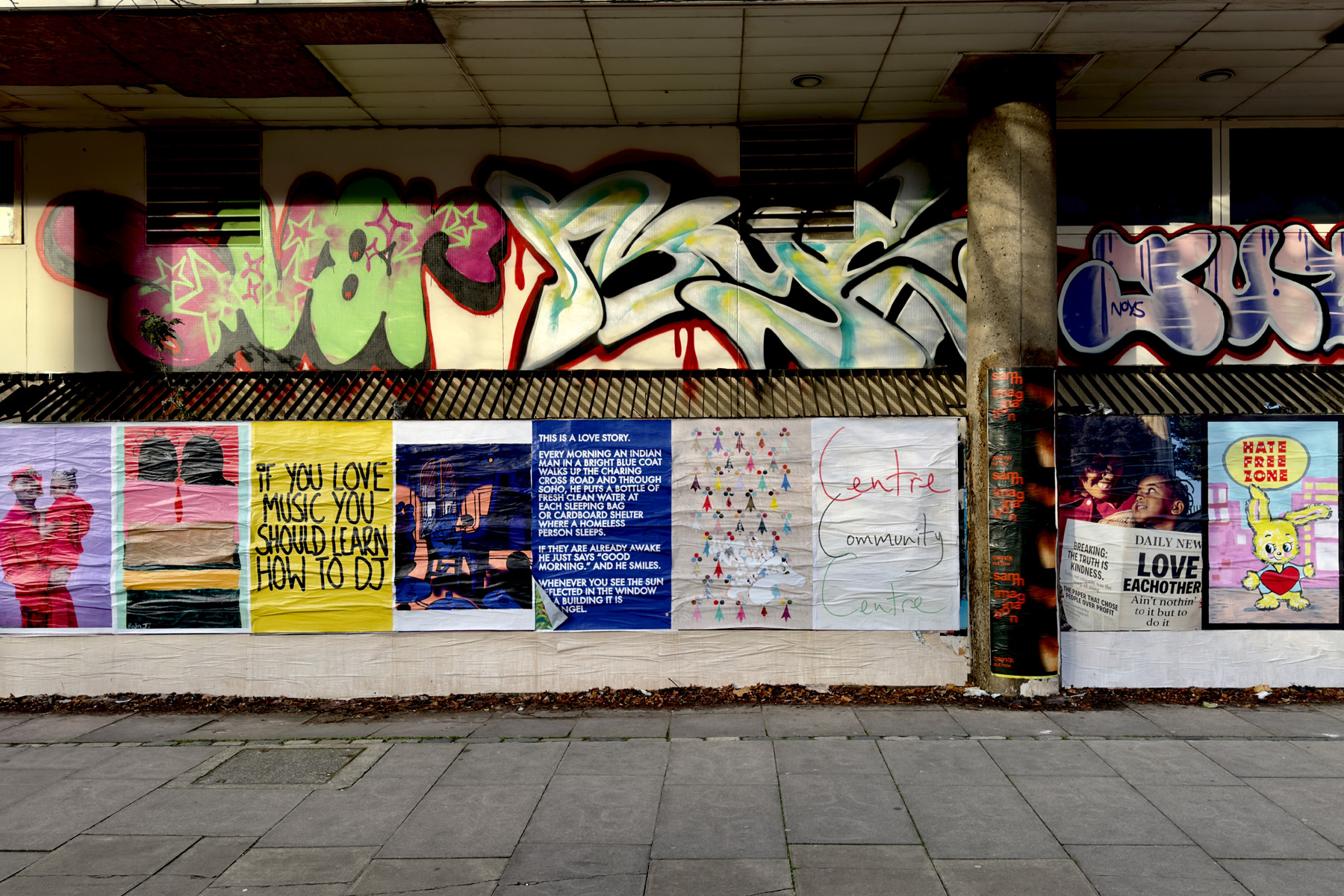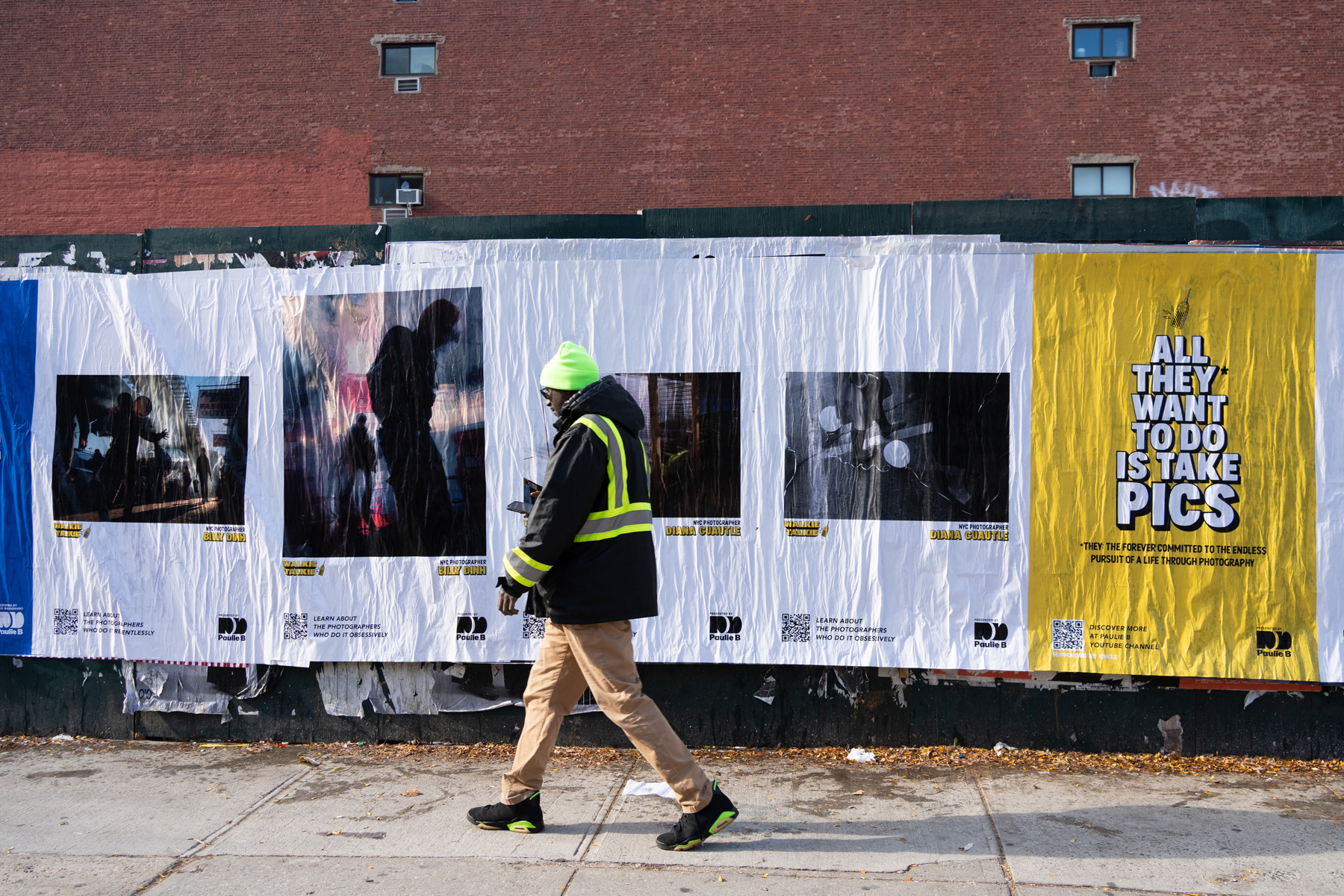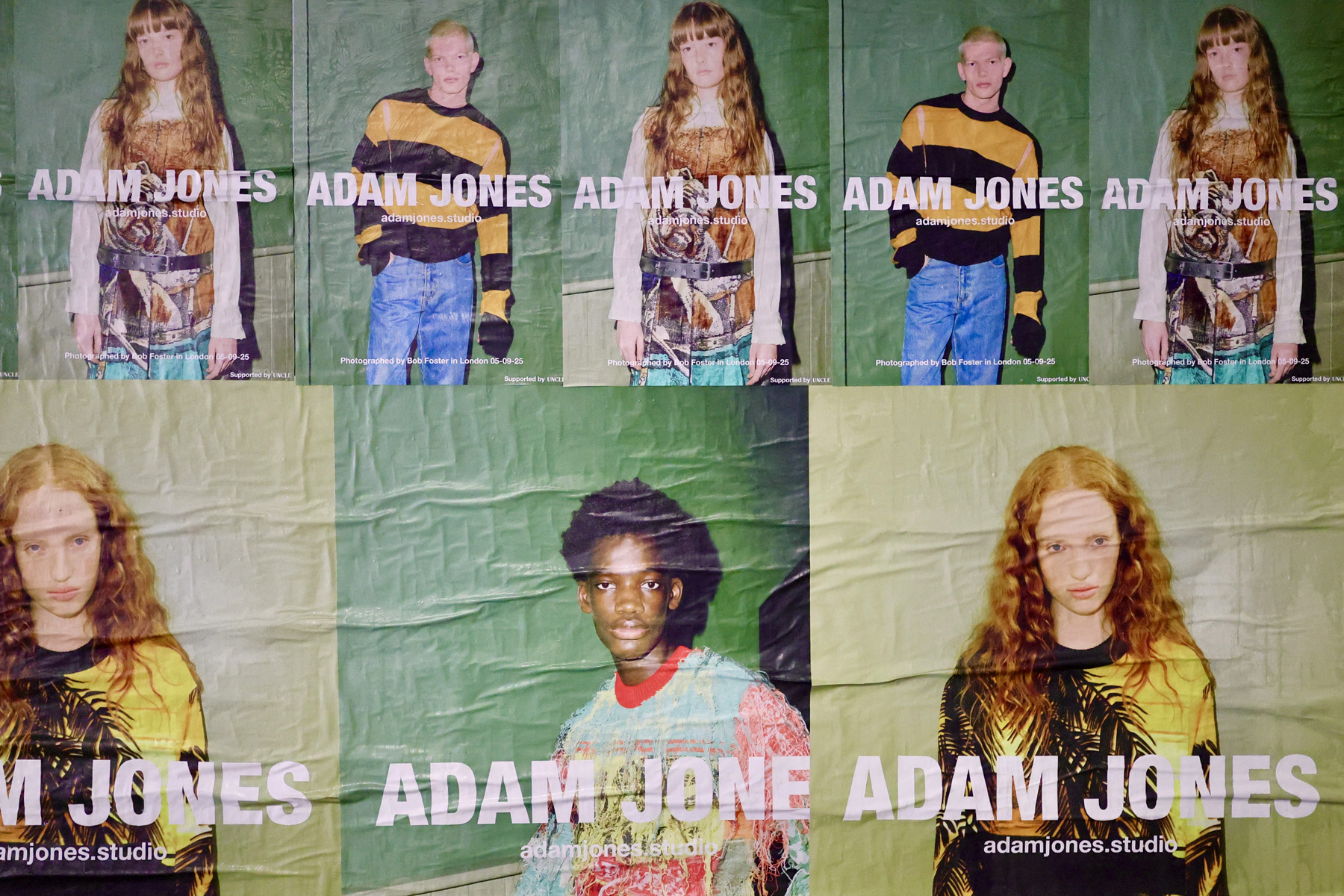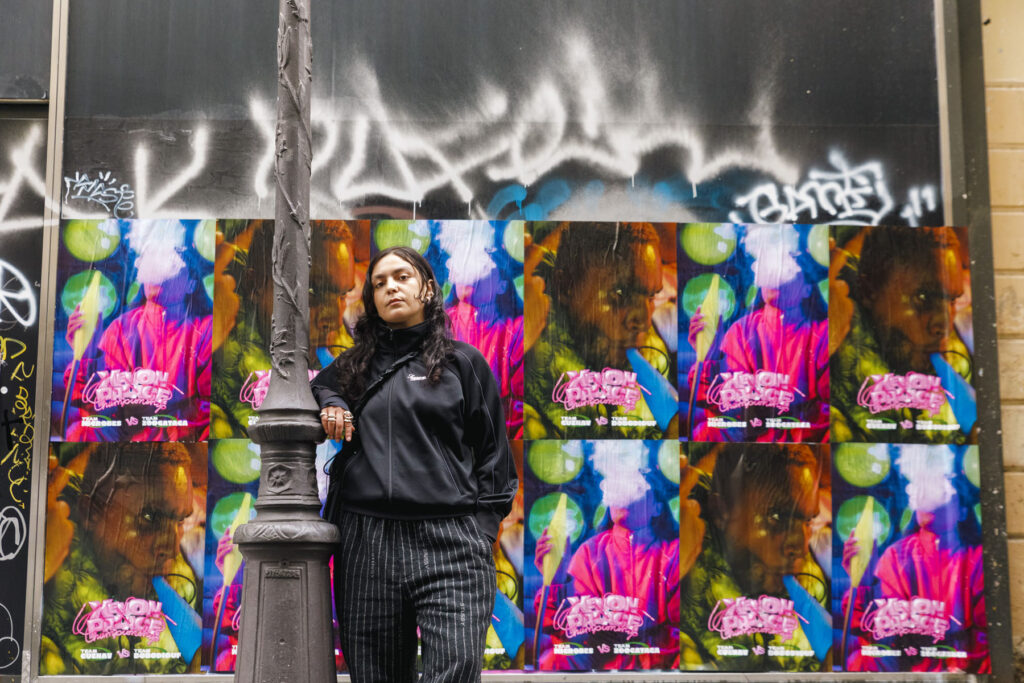

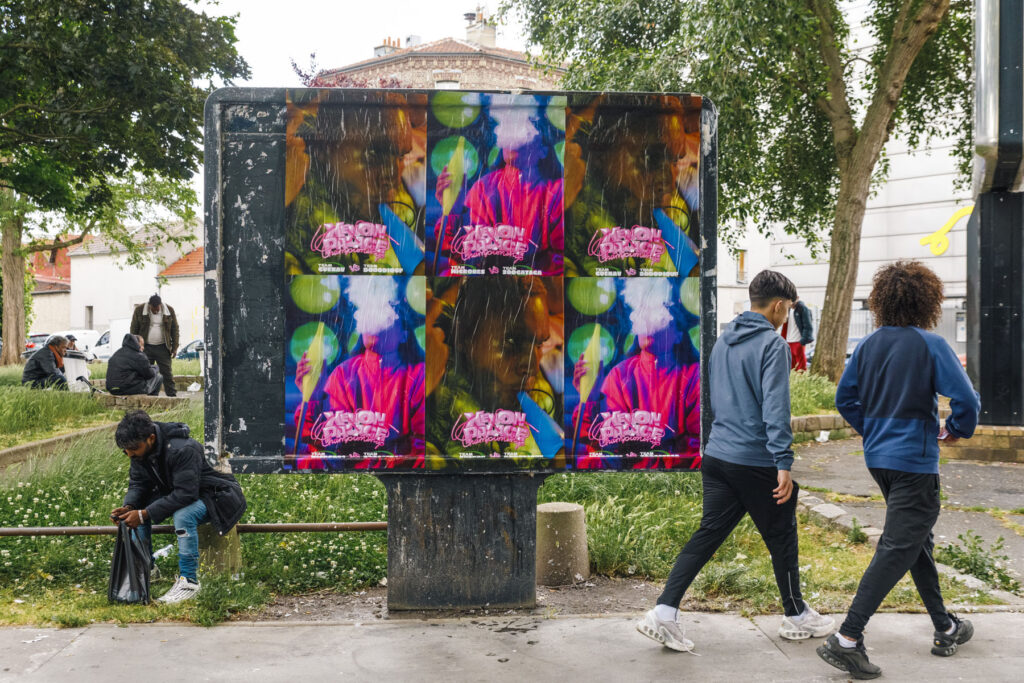
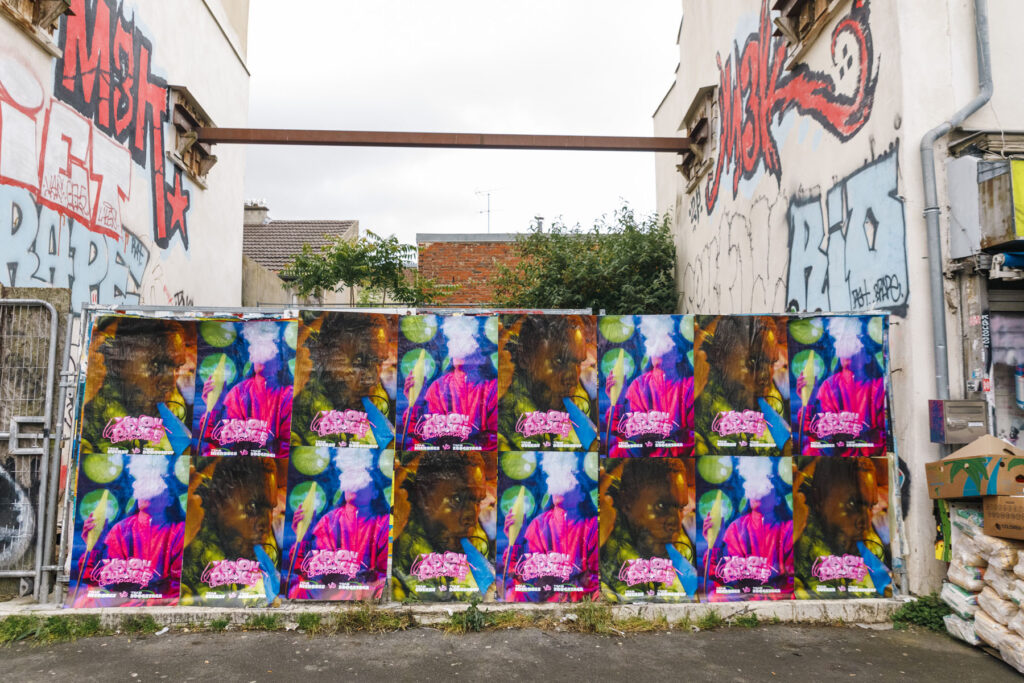
Born in Bordeaux in 1994 and now based in Marseille, Sadik creates richly imagined universes that blend fiction, documentary, French rap, gaming, and emotional intimacy. Her practice explores masculinity, Maghrebi identity, and working-class youth culture in France, what she sometimes calls Beurcore through the lens of digital art, machinima, and performance. With a degree from the Bordeaux School of Fine Arts, her work has been exhibited internationally in cities including Paris, Berlin, Liverpool, London, Rome, and New York.
Across films and CGI, Sadik’s characters, usually young men, undergo emotional or spiritual transformation in stylised, often surreal environments. In XENON PALACE CHAMPIONSHIP (2023), a mystical hookah lounge becomes a refuge for friendship and healing. In La Potion (EH), a video game avatar navigates anxiety, melancholy and serenity from inside a BMW parked on Camden High Street. These aren’t just visual experiences, they’re emotional architectures, filled with tenderness, tension, and unexpected humour.
“The worlds I create are fictional, but rooted in real life,” she tells UNCLE. “Sometimes they take place in the present, more often in the near future. They can be set in virtual or real environments, but they always stage real emotions and real experiences.”
Her imagined spaces, often shaped like video games or reality TV, remix the codes, objects and symbols of French working-class youth culture. These aren’t just visual spaces, she explains, “they’re emotional and symbolic territories where other ways of existing can be imagined.” At their core: identity, love, masculinity, and transformation.
But what happens when an artist like Sadik takes her virtual world to the streets, through a wildposting campaign across Paris?
Well – more of the same.
Because for Sadik, the gallery has never been the final destination. “I believe that art shouldn’t be confined to exclusive places,” she says. “It’s all about who feels welcome and who doesn’t.”
Her own first encounter with an exhibition came late, and only through art school. That distance still shapes her outlook. “My work is about creating environments where people can see themselves reflected,” she continues, “especially those whose lives and realities are rarely represented in these spaces. And showing it exclusively in those institutional spaces sometimes feels counterproductive.”
Instead, she speaks of bending institutional rules, slipping between formats, and making space for new audiences. Audiences that will find the Marseille artist’s work on Parisian walls.
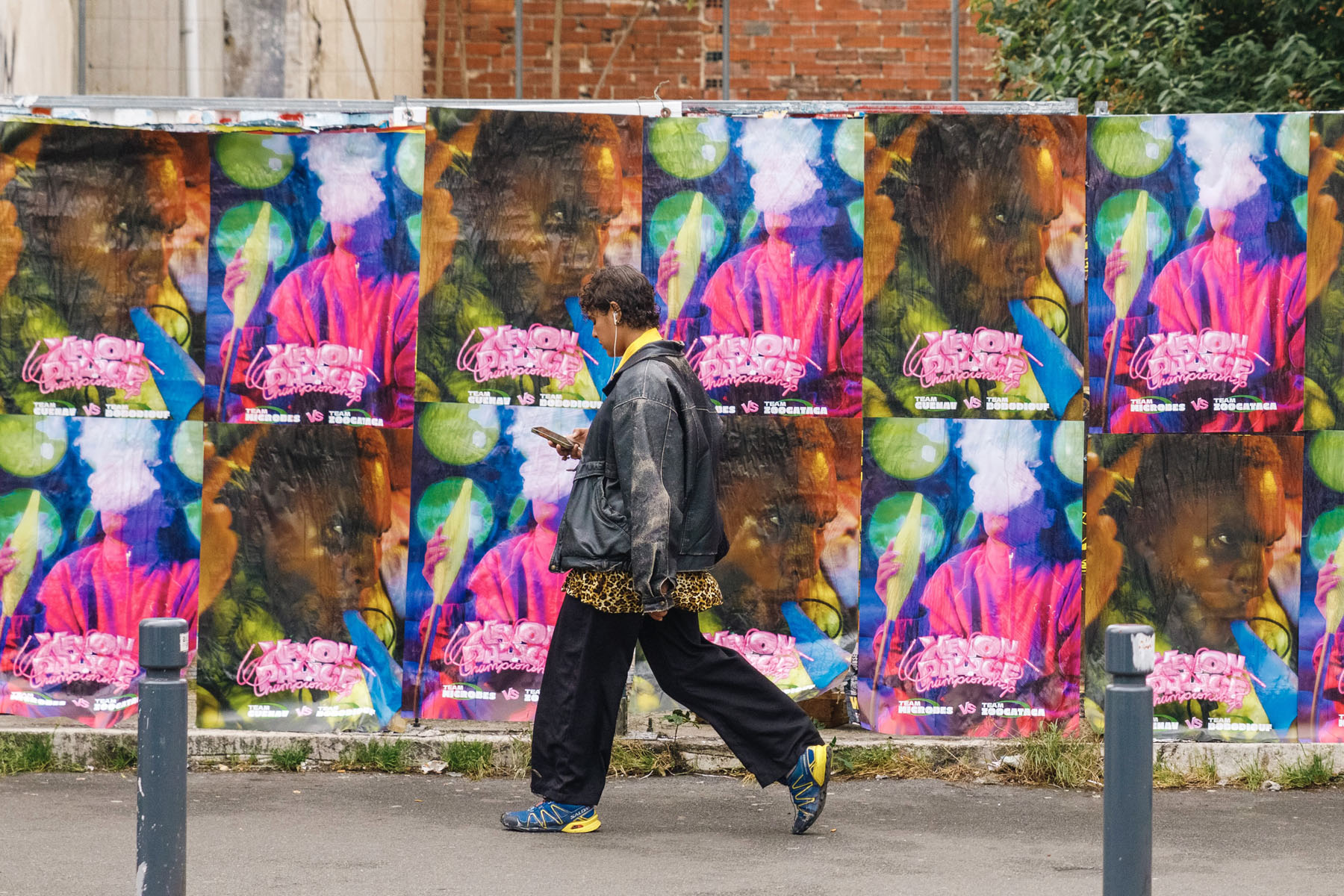



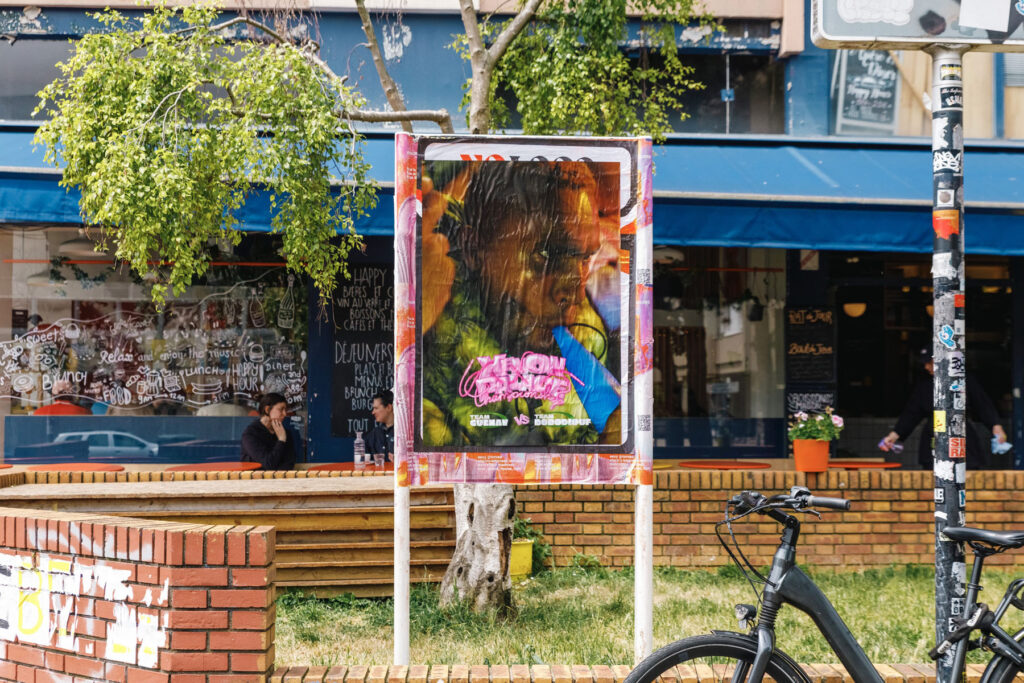
YOUR WORK LIVES BETWEEN FICTION AND DOCUMENTARY, YET DRAWS HEAVILY ON GAMING, ANIME AND RAP MUSIC, TOO. CAN YOU TELL US ABOUT THE EARLIEST INFLUENCES THAT SHAPED YOUR VISUAL LANGUAGE?
I’m really a child of television. I grew up with cable at home, so I was constantly watching everything from Disney Channel to MTV, cartoons, reality shows, anime, whatever was on. That shaped my visual language early on. When I started art school and began making videos, I naturally started remixing those references, recreating the formats I grew up with. It’s the same with video-game and French rap. It was a huge part of my life growing up and so it’s always been part of my work.
Among all of it, the very first one was TV shopping. I used to watch it every morning with my mom. That format gave me so much freedom. I could experiment with visuals, voiceovers, objects design, writing, and performance. I was creating my own objects, playing the host, building a whole show. It was a way for me to talk about my culture differently, with humour but also with depth. Behind the playful surface, there was something more personal and layered happening. It allowed me to express working-class culture on my own terms, both in how it looked and in what it meant.
DO YOU SEE YOUR PRACTICE AS WORLD-BUILDING? AND IF SO, WHAT DOES A SARA SADIK WORLD ALWAYS INCLUDE?
Yes, actually the world-building process comes first in all my projects. Each project has a complete universe where fiction and real-life emotions coexist. I would say that they always include young men from working-class and diasporic communities in France, often marked by fragility, but never reduced to it. These worlds blend the codes of video games, reality TV, rap, and sci-fi to create transformative narratives. They are built from real gestures, objects, languages, and emotions that I reinterpret to imagine new ways of being. They are always spaces for inner journeys, for love, for self-discovery, for resilience. They always include a deep emotional dimension, and a desire to offer alternative narrative.
MUCH OF YOUR WORK REVOLVES AROUND EMOTIONAL TRANSFORMATION – ESPECIALLY FOR YOUNG MEN AS SEEN IN YOUR XENON PALACE CHAMPIONSHIP. WHAT DRAWS YOU TO EXPLORING SPECIFIC THEMES IN YOUR WORK?
For me, it reflects something deeply intimate and political at the same time. I often work with young men who carry visible and invisible wounds, and I want to create spaces where they can be seen as they are, where fragility becomes strength, and emotions are not a weakness but a path to growth.
Themes like love, identity, resilience or friendship are at the core because they’re rarely offered with care or depth to these men in mainstream narratives. Through my fiction, I try to imagine what healing could look like when tenderness is allowed to exist, especially for those who are denied the space for personal growth in real life where social and emotional transformation is often blocked by structural violence and everyday struggles.
YOUR WORK PUTS EMOTIONS LIKE ANXIETY AND SERENITY INTO A GAMING-STYLE ENVIRONMENT THAT, GROWING UP PLAYING GAMES, DIDN’T ALWAYS COME ACROSS IN THE LIMITED GRAPHIC QUALITY AND STORYLINES. WHY DO YOU THINK VIDEO GAMES AND INTERACTIVE ANIMATION ARE SUCH A POWERFUL ART FORM?
These types of media create immersive spaces where emotions become active experiences rather than passive observations. As an artist, I have the freedom to create games and interactive work that are not intended for commercial platforms but rather become machinima films or experimental narratives. This freedom allows me to tell sensitive and nuanced stories, exploring emotional depths that conventional games often avoid, even though this has changed now. Within this space, I can experiment and push boundaries, to develop new ways of storytelling.
THERE’S AN INTIMACY IN YOUR CHARACTERS, EVEN WHEN THEY’RE STYLISED OR ‘VIRTUAL’. HOW DO YOU HUMANISE DIGITAL FIGURES AND KEEP EMOTION AT THE CENTRE?
I believe the key is to ground them in real, intimate stories and emotional truths. Even when they’re virtual avatars, my characters carry the weight of lived experiences of the people they’re inspired by, their vulnerabilities, desires, and contradictions. I draw from real voices to make them relatable and authentic.
A central technique I use is internal monologue, which allows the character to express their inner thoughts and emotions directly to the audience. I’m doing this as a way to humanise this virtual persona but also to show or tell their internal struggles and aspirations, making their experiences more tangible and emotionally resonant. I feel that’s how the connection between the viewer and the character can happen, by making an avatar a complex, feeling individual.
YOU’VE SAID YOU LOVE WHEN ART IS TAKEN OUT OF THE GALLERY. WHY DOES THAT MATTER TO YOU?
I believe that art shouldn’t be confined to exclusive places. It’s all about who feels/is welcome and who doesn’t/isn’t. I don’t remember the first time I went to a gallery show, but it was quite late in my life, and only through my art studies.
My work is about creating environments where people can see themselves reflected, especially those whose lives and realities are rarely represented in these spaces. And showing it exclusively in those institutional spaces sometimes feels counterproductive.
I chose to work within the institutional art world and I accept some of its rules, but I also try to bend them to make space for other presences, other narratives, and other audiences. That’s why, whenever I can, I try to make sure my work can also be experienced in more public or accessible ways.

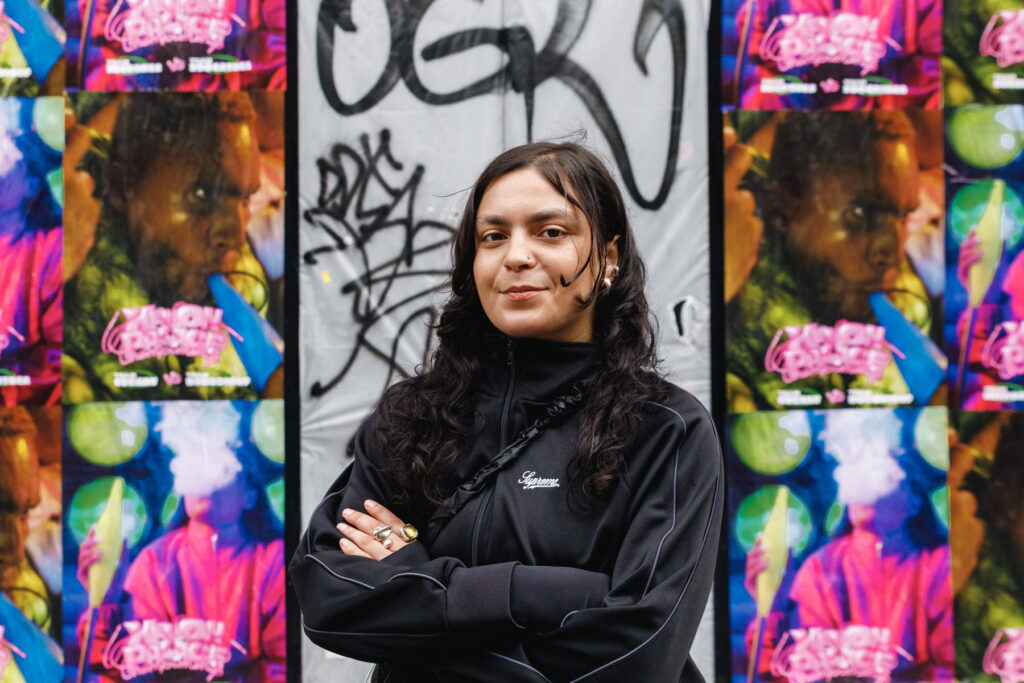

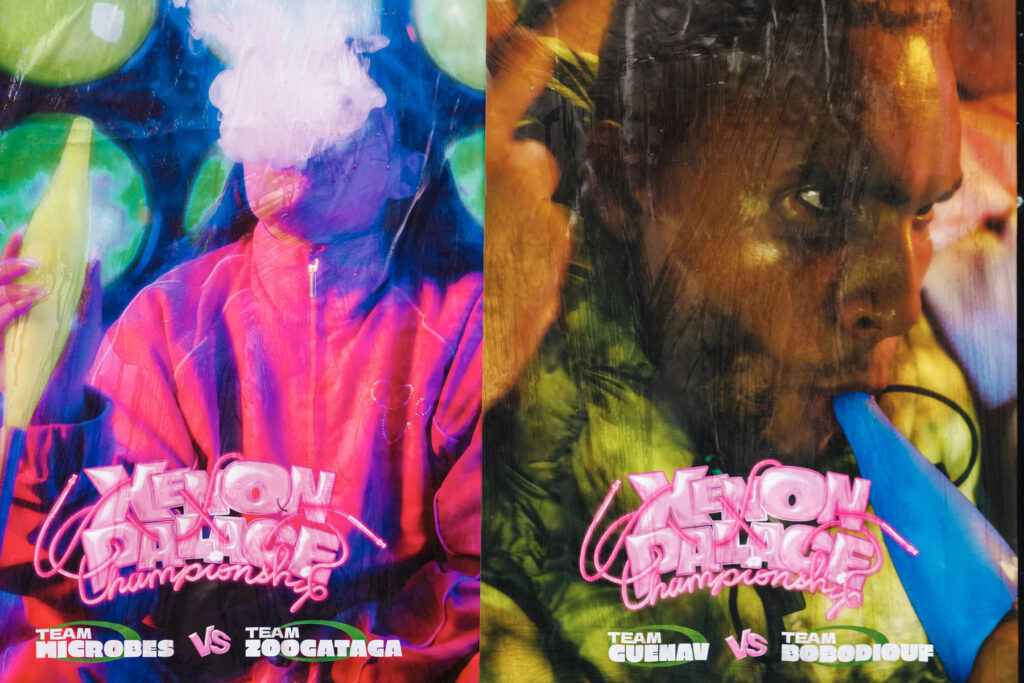
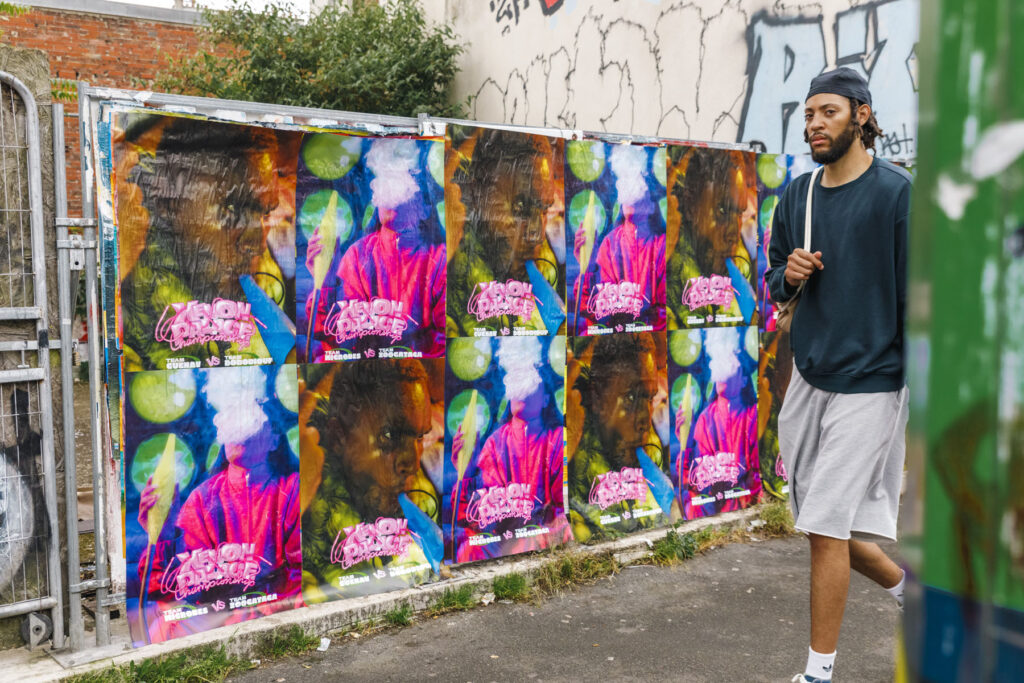
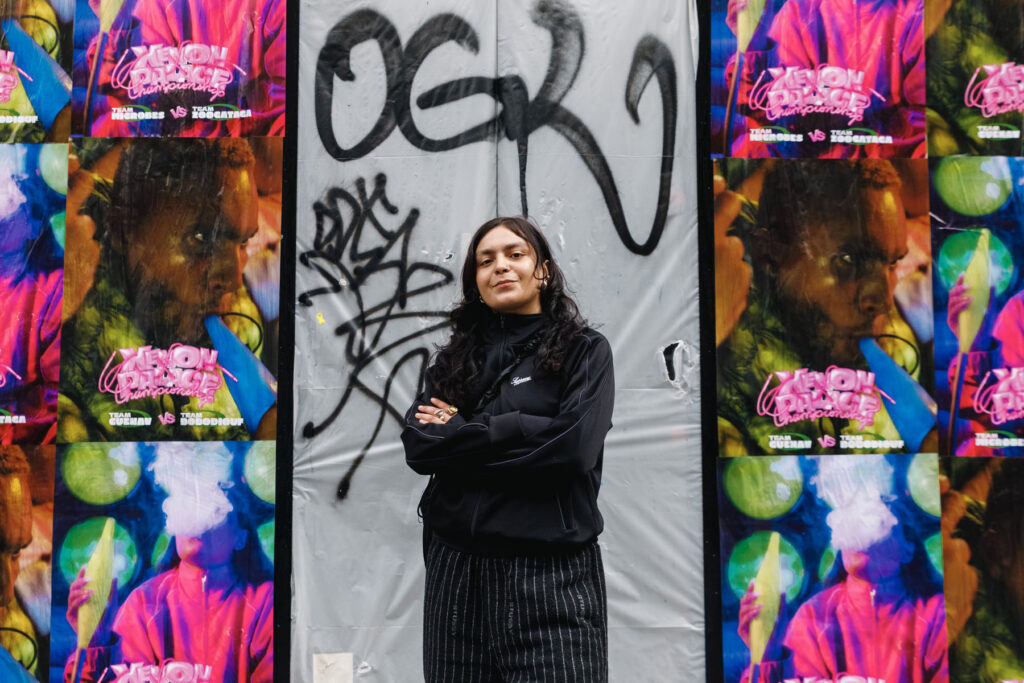

I don’t yet have a clear vision of what kinds of spaces should be created, whether physical or digital. I do believe that it’s necessary to have many of them, hybrid and evolving. But I think others will be the ones to imagine and build them.
YOU’RE BASED IN MARSEILLE, AND MUCH HAS BEEN SAID ABOUT ITS CULTURAL DISTANCE FROM PARIS. HAS BEING FROM THERE SHAPED YOUR SENSE OF IDENTITY AS AN ARTIST – OR YOUR STORYTELLING?
Choosing to live in Marseille instead of Paris, especially at a time when Paris was the obvious choice for many graduates, gave me the freedom to evolve at my own pace. I was able to grow without being in a hyper-competitive context and stay free in how I wanted to create. Marseille is also a city filled with powerful symbols, which naturally found their way into my work. Since I focus on a specific social group, being here also allowed me to collaborate with local people and institutions directly connected to the stories I tell.
A LOT OF YOUR WORK FEELS LIKE IT’S ABOUT TRANSFORMATION – MORAL, EMOTIONAL, PHYSICAL. DO YOU SEE YOUR CHARACTERS AS STAND-INS FOR YOU, OR FOR SOMEONE SPECIFIC?
They’re not autobiographical, but they carry parts of me (emotions, memories, questions). They’re shaped by people I know, people I share moments with. It can be teenagers that I meet and work with during a workshop or men from my life such as my husband or my brother. It’s always a mix of personal and collective experience.
What interests me is transformation as a form of resistance or survival. These characters often go through things that reality doesn’t allow them to fully experience like healing, tenderness, recognition. Fiction gives me a way to offer them that space, even if it’s virtual or imagined.
YOUR INSTAGRAM IS PRIVATE – WHICH IS RARE FOR A DIGITAL ARTIST. IS THAT A CONSCIOUS BOUNDARY, OR MORE PERSONAL THAN PROFESSIONAL?
I’ve switched it back and forth a few times but recently decided to keep it private for good. Even if it’s a professional account, it’s my only one and still gives everyone a kind of direct access to me. At some point I needed to protect that. My personal life comes first, even if it’s not the most strategic choice professionally. I still accept most requests, but I just feel safer this way.
WHAT FEELS URGENT FOR YOU TO EXPLORE NEXT – EITHER IN TERMS OF FORMAT, THEME, OR EMOTIONAL TERRITORY?
I feel like I’ve managed to bring certain stories and voices into Contemporary Art, now I’d like to do the same with French cinema. It’s another space where I feel there’s still a real lack, maybe less in terms of who’s represented but definitely in how. I already started to think and work on it, but it’s taking some time.
Regarding themes, I’ll keep doing what I’ve been doing and try to keep expanding it. Lately, I’ve been drawn back to teenagerhood because it’s a period where everything shifts so fast and I want to keep telling and archiving those new stories.
DO YOU THINK DIGITAL ART IS BEING TAKEN MORE SERIOUSLY NOW, OR ARE THERE STILL MISCONCEPTIONS YOU’RE WORKING AGAINST?
Yes I think it is. But I still feel that within institutions, there’s often a lack of proper equipment and professional technicians to support the installation of digital works, even more interactive work. There’s also sometimes a lack in how these works are discussed and presented to the public by mediation teams, especially when it comes to convey the why and how about the medium, the technologies involved and the artistic intentions behind the use of them.
WHAT WOULD YOUR DREAM PUBLIC ARTWORK LOOK LIKE, IF THERE WERE NO LIMITS?
I actually have one in mind, but I’d rather not describe it yet. It’s something I hope I can make happen in the future, so I prefer to keep it to myself for now.








